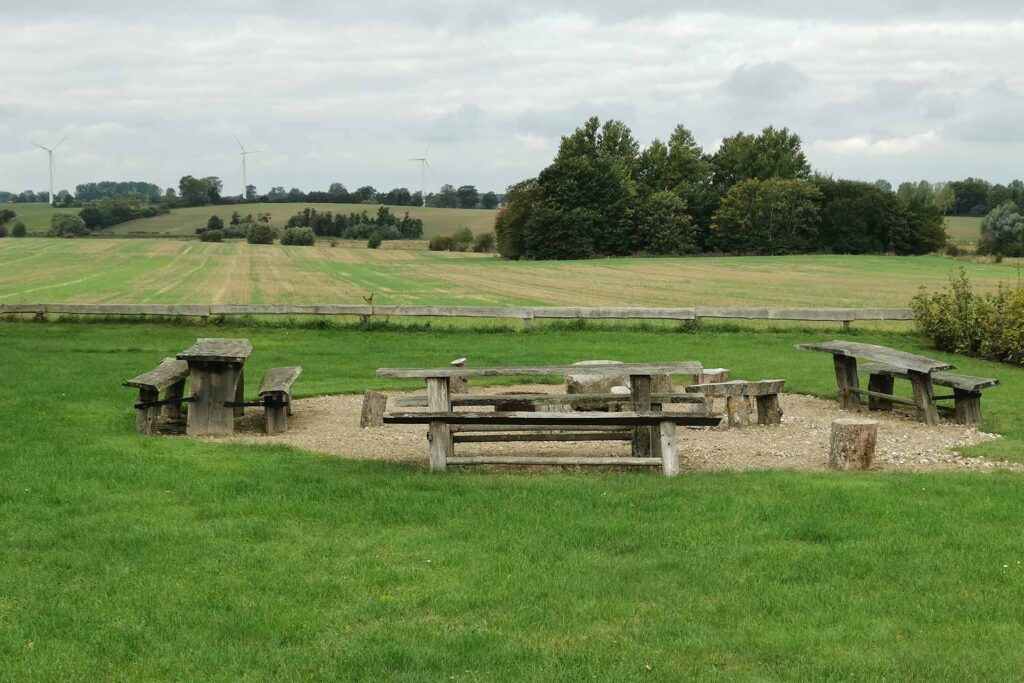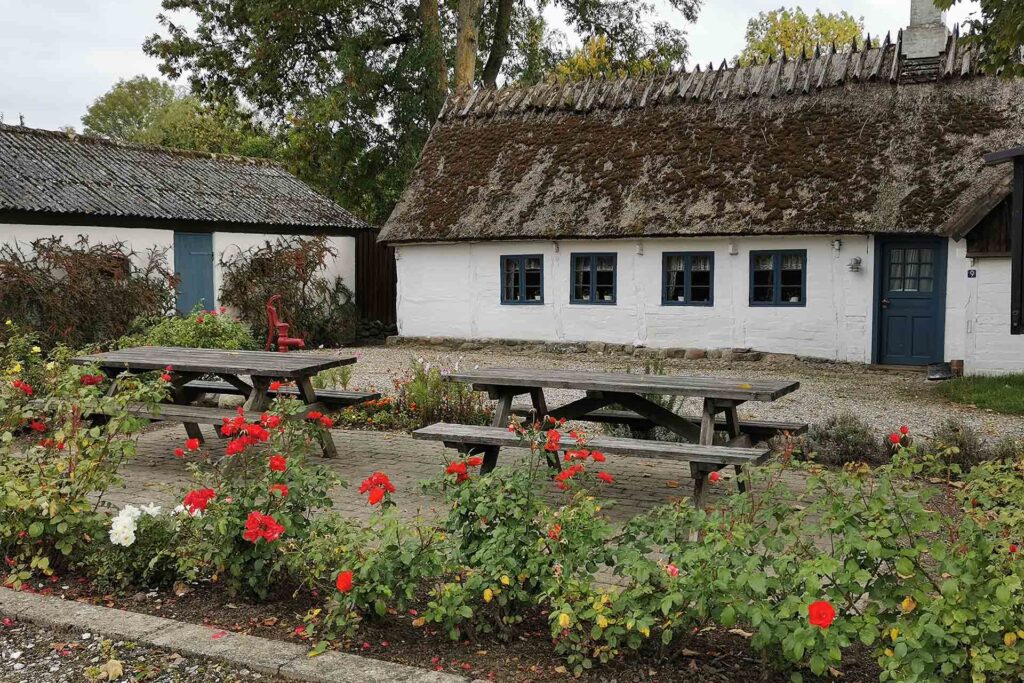We have now visited Akaciegaarden twice and we are very…

Varpelev – a charming and historical village
Once upon a time in the iron age, King Varpe lived in the little village with the twisting roads, and he is most likely the reason for the name of the village “Varpelev”. Students of toponomy believe that the ending “-lev”, originating from around the birth of Christ, means “heritage”. Thus, Varpelev should be dedicated King Varpe as “the heritage of Varpe”.
Varpelev Church
One of the oldest churches in the municipality is Varpelev Churc, which was built on the highest location in Varpelev in 1080-1175, most likely by the Rane family.
In the end of the building period, the tower of the church was added. The extensions and the gables of red mediaeval large bricks were not added until 1475-1536.
The bishopric of Roskilde took over the possessions of the Rane family, and during the Reformation in 1536, King Christian the third took over the Church. The church was sold to private persons shortly after, but the Crown bought it back in 1678. In 1743, Varpelev Church was sold at a public auction, and the church passed on to private property on the first of January 1910 .


Ranestedet
The little regional house, Ranestedet, was built of limestone from Stevns in 1778. The small house with thatched roof and extension is a journey back in time to the middle of the 1900’s, decorated with furniture, farmer’s tools and domestic appliances from around that time.
The regional house is located obliquely opposite Varpelev Churc, and in Ranehaven, the garden behind Ranestedet, you will find benches where you can enjoy your packed lunch overlooking Tryggevælde Ådal.
Find more information about Varpelev: www.varpelev.dk.

A small oasis in Stevns


